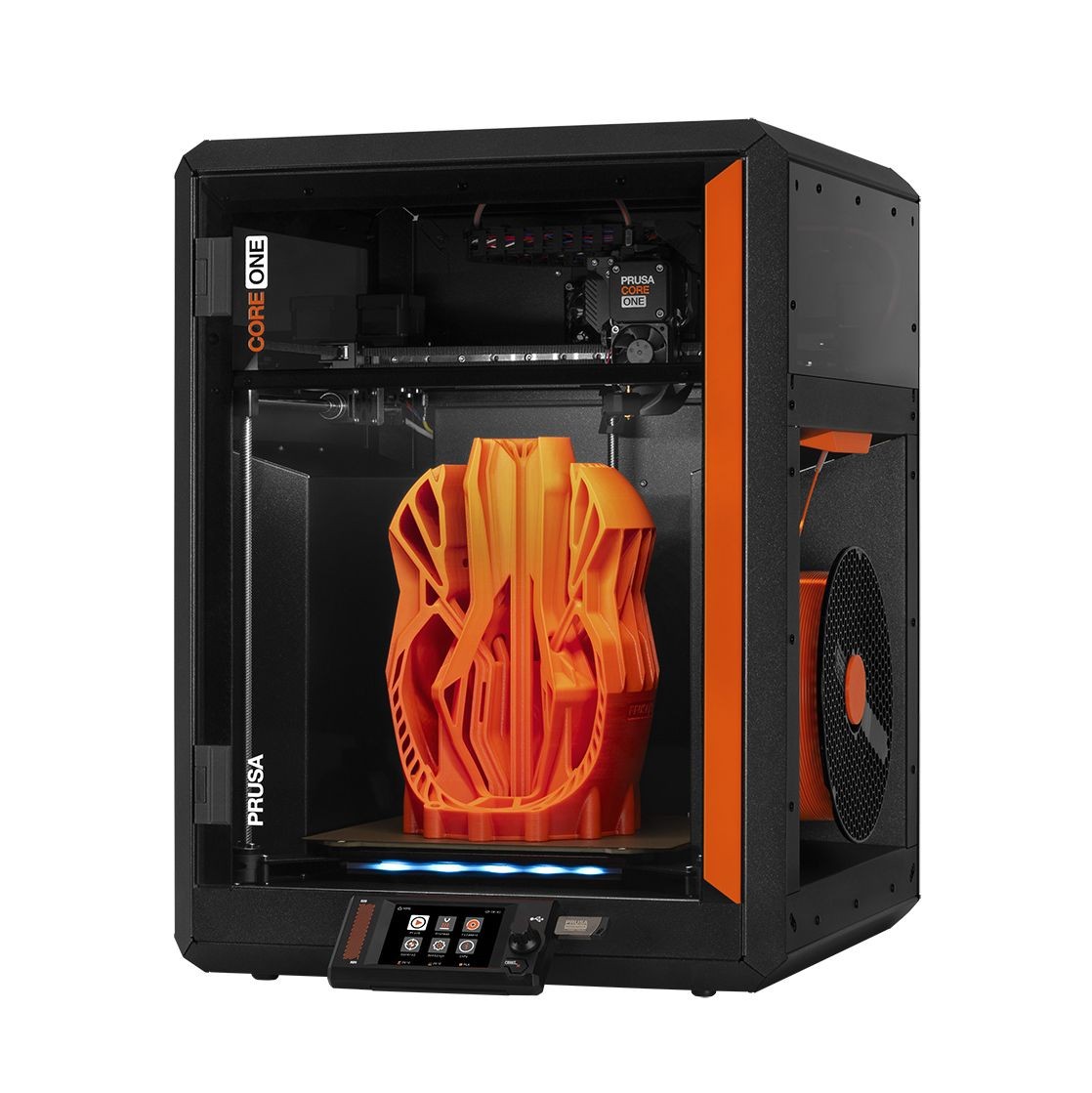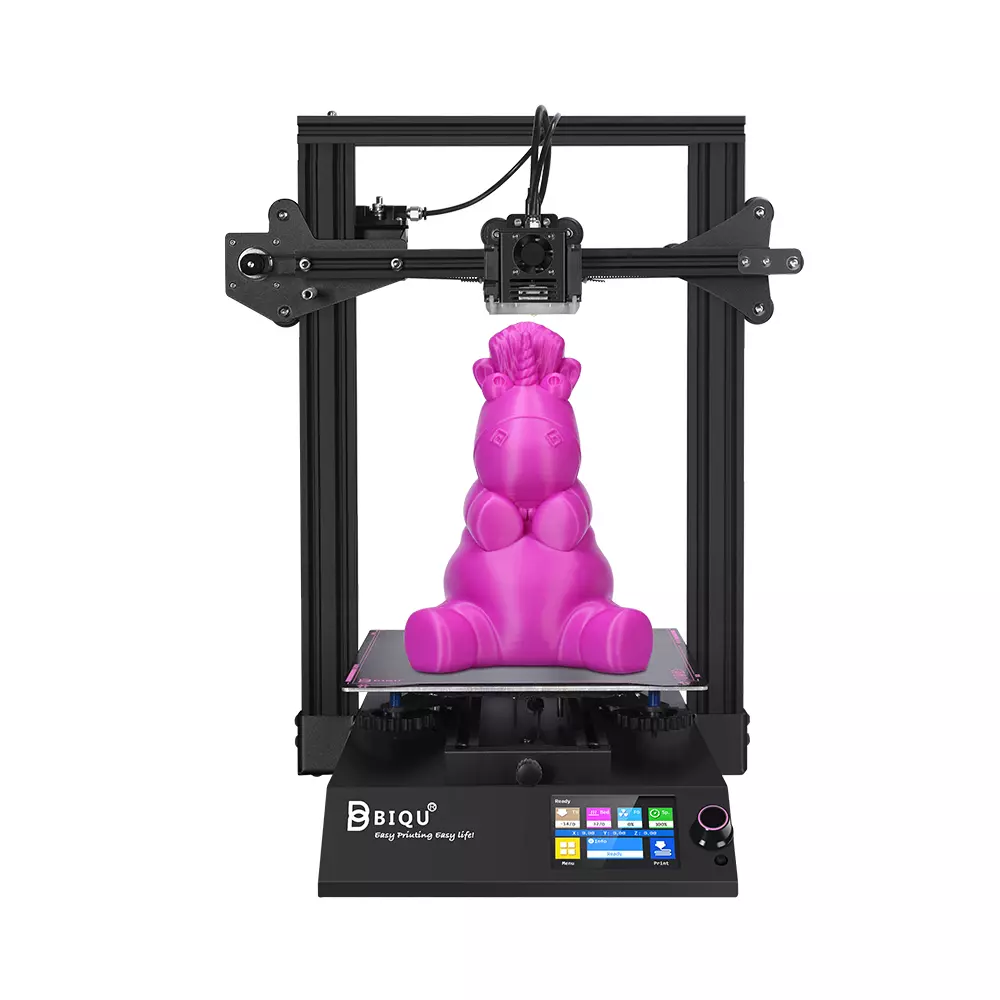Compare Core One vs BIQU B1
Comparison between the best 3D printers
Choose the best 3D printer at the best price. The cheapest 3D printers are here.
Buy a 3D printer here with 3D Fila.
 |
 |
|
| Model | Core One |
BIQU B1 |
| Printing Material | Filament | Filament |
| Buy Filament for Prusa Core One | Buy Filament forBigTreeTech BIQU B1 | |
| Estimated price | $1200,00 | $269,00 |
| Manufacturer | Prusa | BigTreeTech |
| Release Year | 2025 | 2020 |
| Print Volume [mm] | 250x220x270 | 235x235x270 |
| Printer Size [mm] | 385x340x620 | 412x402x492 |
| Weight [kg] | 14 | 8,00 |
| Power Loss Recovery | YES | YES |
| Enclosed printer | YES | NO |
| Bed Leveling | Automatic | Manual |
| Filament End Sensor | YES | YES |
| Bed type | Heated | Heated |
| Power supply system | Direct Drive | Bowden |
| Standard nozzle | 0,4 | 0,4 |
| Maximum Nozzle Temperature [°C] | 300 | 250 |
| Maximum Bed Temperature [°C] | 120 | 100 |
| Maximum printing speed [mm/s] | 500 | 100 |
| Filament holder | YES | YES |
| Camera for supervision | NO | NO |
| Recommended filaments | PLA, TPU, TPE, HIPS, ABS, PETG, WOOD, PC, PA, PVA, ASA | PLA, TPU, ABS, PETG |
| Recommended slicers | Cura, Prusa Slicer, Orca | Cura, Simplify, Slic3r |
| Maximum Resolution [mm] | 0,01 | 0,1 |
| Processor | xBuddy 32 bit | 32 Bits BTT SKR V 1.4 |
| Display | Touchscreen 3,5'' | Touchscreen TFT 3,5'' |
| Power Supply | 240 W | 24V / 360W |
| Connectivity | SD | SD / USB |
| Operating systems | Windows, Linux e Macbook | Windows, Mac, Linux |
| Date of registration in the system | 2024-11-27 | 2021-04-14 |
| Release date | 2025 | 2020 |
| Extra features | The Prusa Core One is a CoreXY 3D printer featuring a robust steel frame, a 3.5" touchscreen, and a heated chamber for technical filaments. It offers 360° cooling for improved print quality and supports upgrades from the MK4S model. With a compact design, a print volume of 270x250x220 mm, and compatibility with the MMU3 for multi-color printing, it stands out for its ease of maintenance, precision, and speeds up to 260% faster than the MK3S+. | The BIQU B1 is an advanced 3D printer with a silent 32-bit BTT SKR V1.4 motherboard and ARM Cortex-M3 CPU, offering DIY interfaces (I2C, SPI, WiFi) and dual Z-axis. Its dual BTT B1 TFT35 V3.0 operating system allows real-time monitoring and multiple printing modes, including G-code visualization effects. It stands out for its BIQU SSS (Super Spring Steel), ensuring easy model adhesion and simplified removal, with the possibility of using it on both sides. It includes a filament sensor, automatically pausing printing in case of filament breakage. The multicolored RGB lights integrated into the hotend allow you to view the printing status even at night. Additional notes include the need for a BIQU-specific Type-C cable and extra interfaces for smart filament sensor and BL Touch. |
| Support for multiple colors and materials (AMS and CFS) | YES | NO |
Notes * |
||
| Cost-benefit | 7 / 10 | 6 / 10 |
| Hardware | 6 / 10 | 2 / 10 |
| Tela | . | . |
| Print volume | 3 / 10 | 3 / 10 |
| Performance | 4 / 10 | 0 / 10 |
Conclusion |
| In comparing the Core One and the BIQU B1 3D printers, several key factors need to be considered in determining the best choice based on user needs and budget. The Core One stands out with its advanced features and build quality, particularly as an enclosed printer with automatic bed leveling and a variety of supported filaments for more complex prints. Its larger print volume and superior maximum print speeds enhance its performance capabilities, making it an ideal choice for users requiring high precision and faster output. It also boasts a power loss recovery feature, further adding to its reliability for longer print jobs. However, this premium performance comes at a significantly higher price point. On the other hand, the BIQU B1 offers good value for its price, making it an attractive option for those who are budget-conscious or new to 3D printing. While it features manual bed leveling and lacks enclosure, it is still capable of handling various common filaments and provides essential functionalities like power loss recovery and a filament sensor. However, its performance, particularly in terms of maximum printing speed and printing resolution, is less impressive compared to the Core One. Ultimately, the choice between these two printers hinges on the user's priorities. If the goal is maximum versatility, quality, and efficiency with a willingness to invest more, the Core One is the preferable option. Conversely, for those seeking a budget-friendly solution that still delivers capable performance for general 3D printing needs, the BIQU B1 serves as a solid choice. Both printers cater effectively to different segments of the 3D printing market, each with its unique advantages and trade-offs. |

